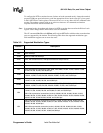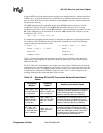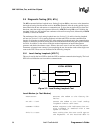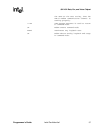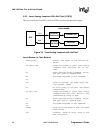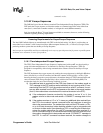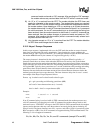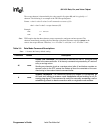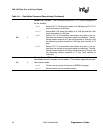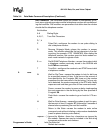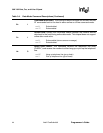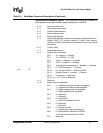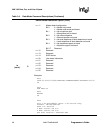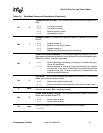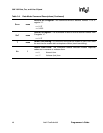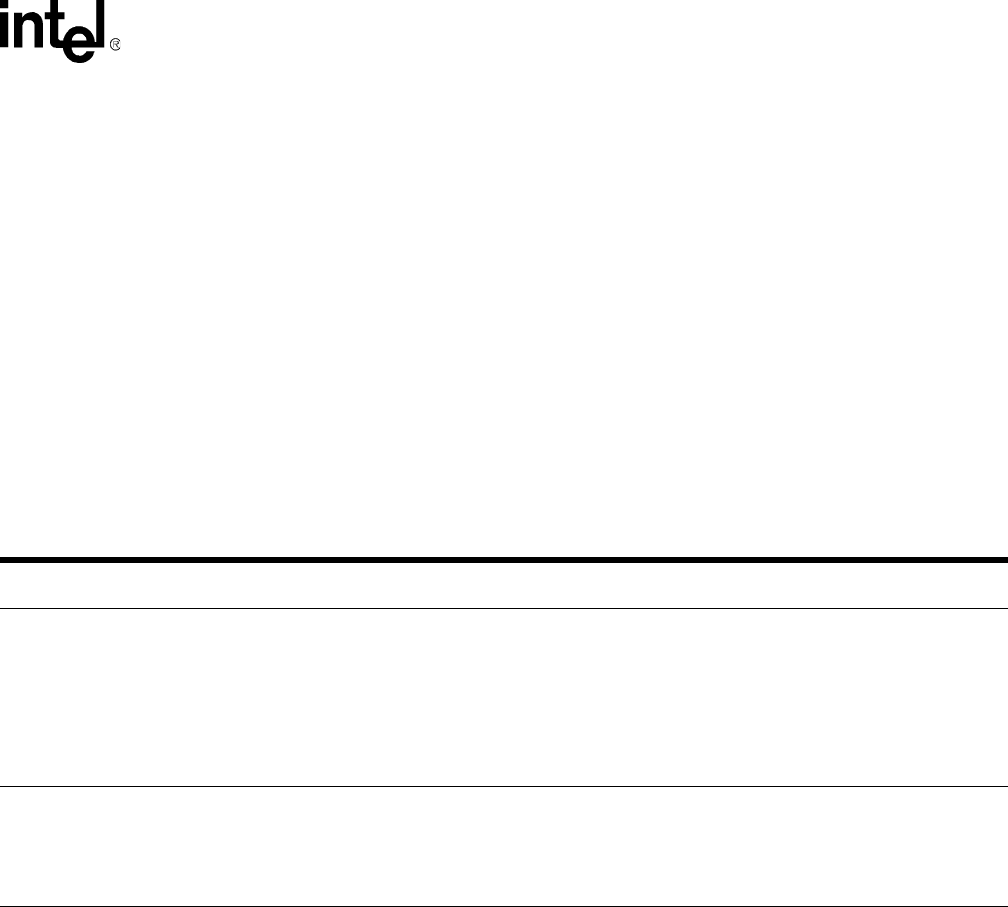
56K V.92 Data, Fax, and Voice Chipset
Programmer’s Guide Intel Confidential 41
The escape character is determined by the value stored in S-register S2, and it is typically a ‘+’
character. The following is an example of the TIES Escape Sequence:
Format: <char1><char2><char3><AT command><contents of S3>
char1 = char2 = char3 = escape character (S2)
Example:
DTE: +++ AT<CR>
DCE: OK
Note: TIES requires that the three-character escape sequence be contiguous and not repeated. The
character immediately preceding the first character of the three-character sequence cannot be the
same as the escape character. Therefore, “+++ AT <CR>” is valid, but “++++ AT <CR>” is not.
Table 3-4. Data Mode Command Descriptions
Note: ** denotes the factory-default setting.
Command Default Description
A/ none
Repeat Last Command: This command re-executes the last AT command string
stored in the command buffer. A/ is the only command not preceded by AT and end-
ed by a carriage return.
Sending any character (such as a carriage return) after A/ and before a modem re-
sponse is sent to the DTE causes the modem to abort the remainder of the com-
mand string in the modem internal command buffer.
A none
Answer Command: This command causes the modem to immediately go
off-hook and initiate an answer mode handshake without waiting for an in-
coming ring signal. This command is useful for manually answering a call or
establishing a back-to-back connection with an originate-mode modem.



